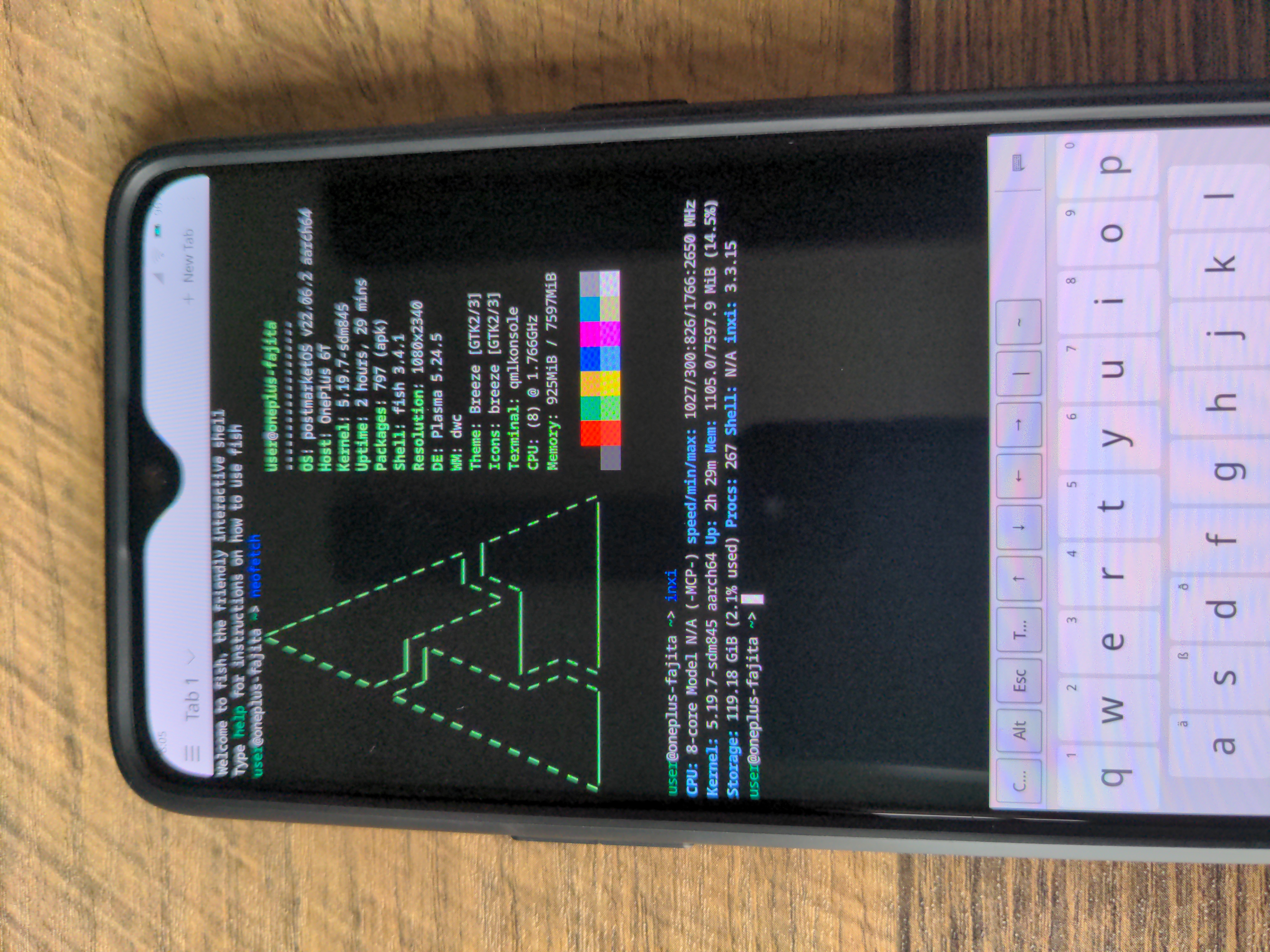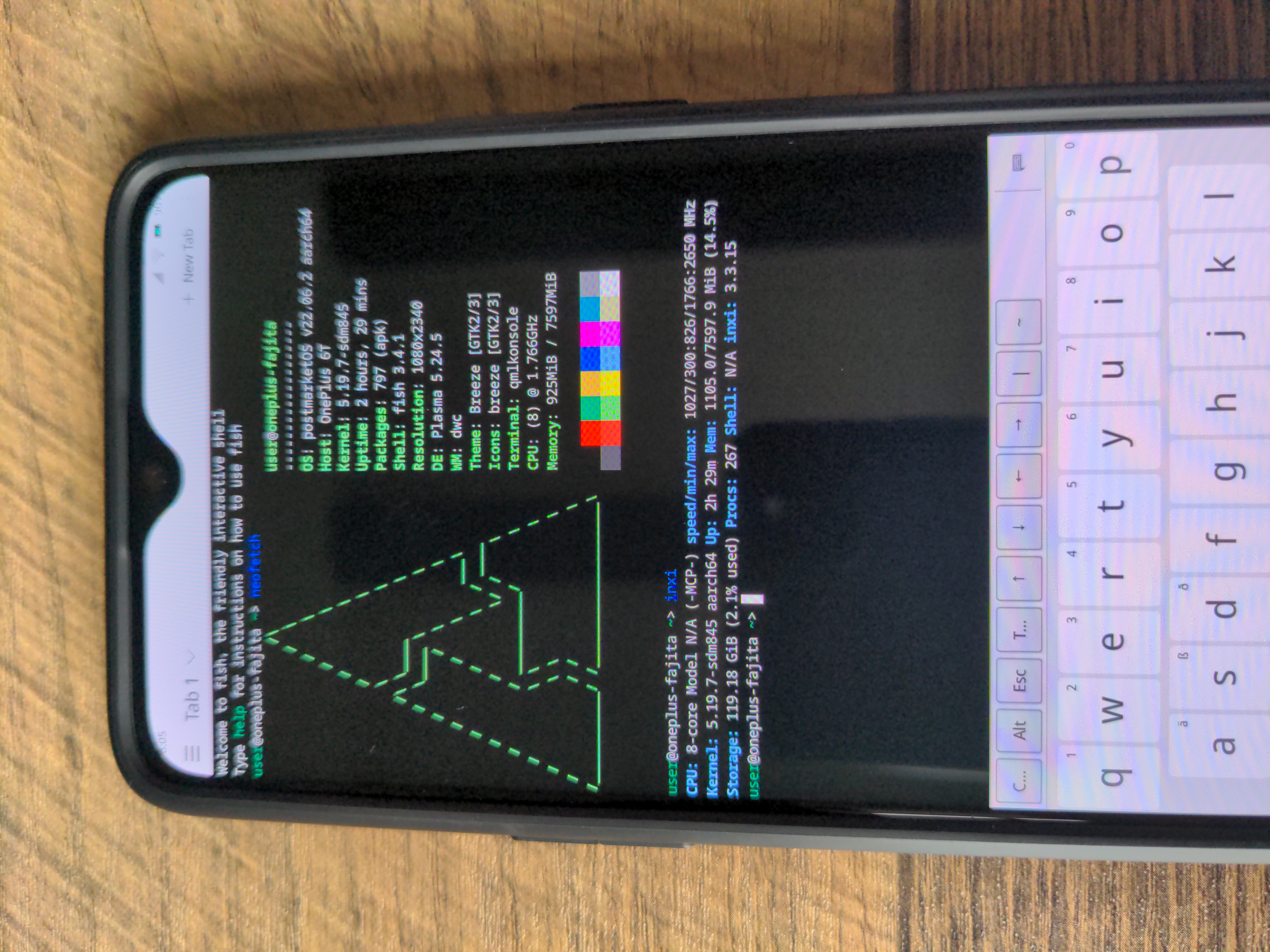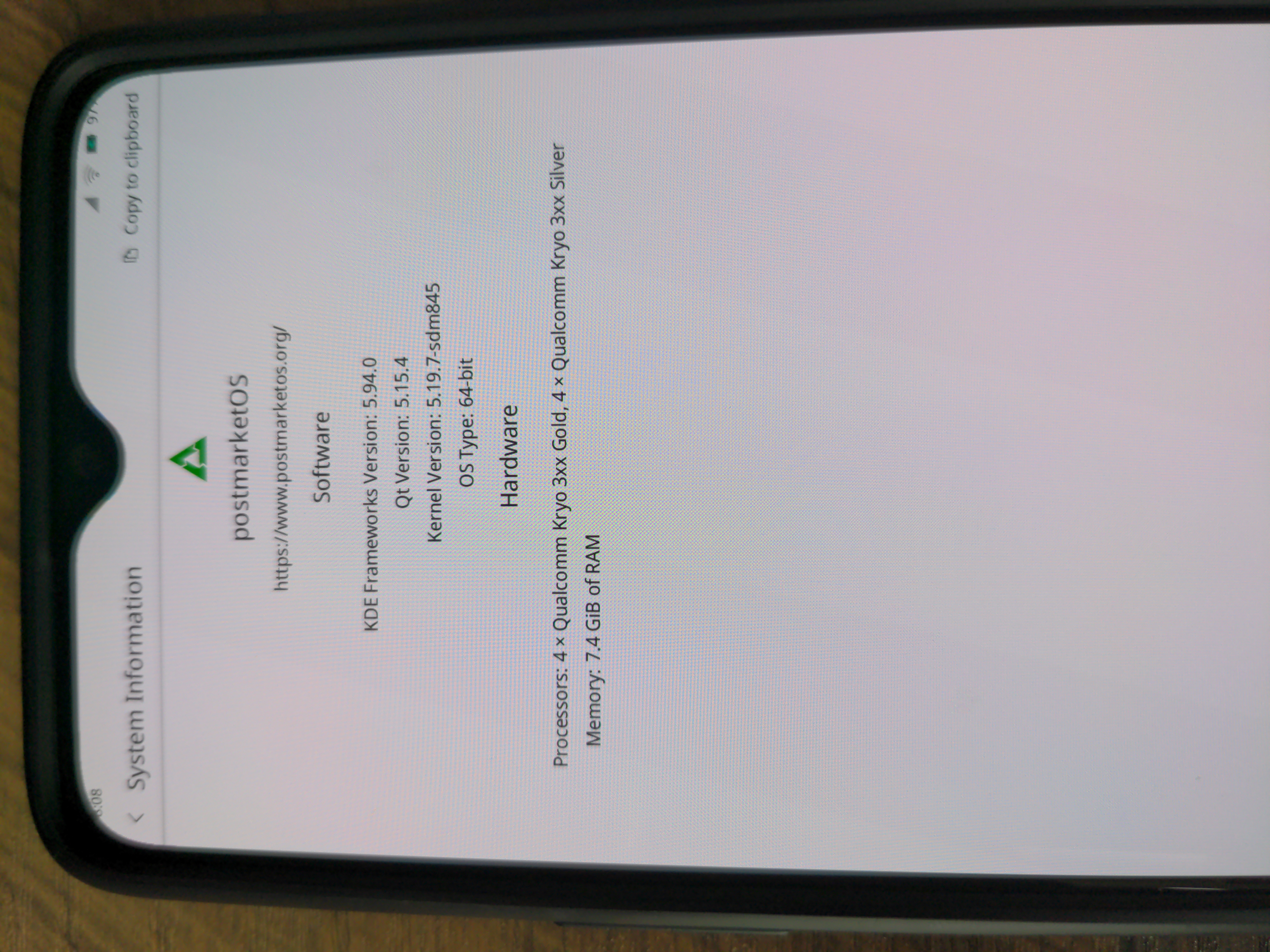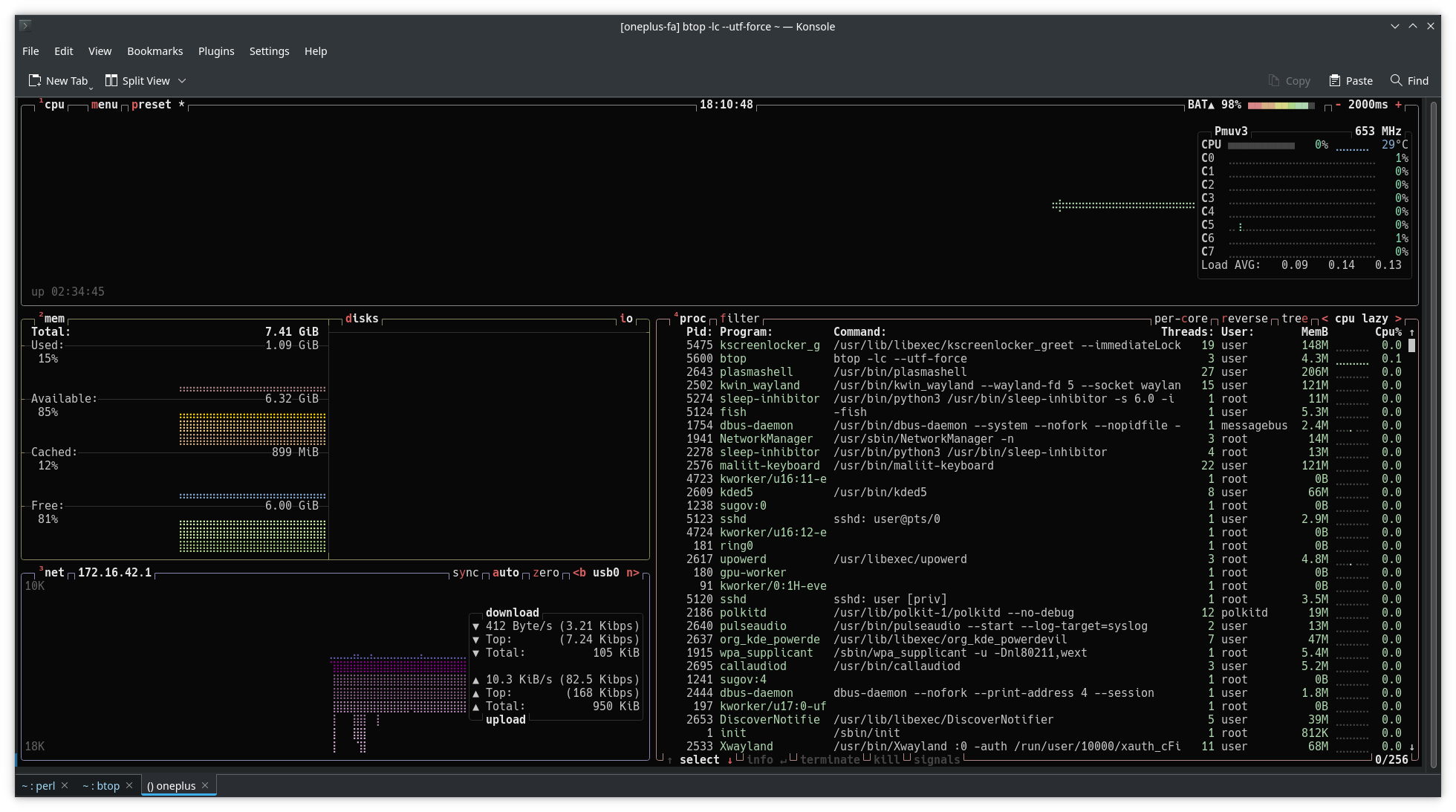Phones, postmarketOS, and Possibility

OnePlus 6T
I finally went through the steps to convert an old OnePlus 6T from a T-Mobile device to an international device. It’s been sitting in my future projects pile forever. Originally, I put LineageOS and then DIvestOS onto it. Both encountered some odd issues with the WiFi not working. There’s an open issue #4667 on the issue. Since I had the tools, I flashed the phone back to stock android. Everything worked as expected. However, I don’t want to run stock android anything. It’s a privacy and security nightmare. But muh apps! You don’t need them.
postmarketOS
I’ve followed the postmarketOS project for a while. The OnePlus 6T is on the supported hardware list. Basically, anything based on the Qualcomm Snapdragon 845 is supported. Systems on a Chip (SoC) aren’t standard, but Qualcomm pushed most of the supporting code into the mainline Linux kernel a while ago.
postmarketOS is based on Alpine Linux for embedded ARM processor and related SoCs. It’s small, simple, and fast. And it works well.
I am surprised how easy it is to load the OS onto the phone. 10 minutes later, my OnePlus 6T is free and running a full linux distribution.

It’s amazing how well it runs. It really does revolutionize mobile computing and opens up a bright future. I can open a terminal, browse the web, and do everything I can on a laptop or desktop, except in a handheld device with its own battery. As more and more software is ported, or recompiled at worst, into ARM binaries, that many more thousands of apps are available for the phone.

Out of the box about 80% of the hardware is supported by postmarketOS. Audio is a work in progress and nearly fuly functional. The camera is next. Is it ready for the average user on the street? No. But the sheer functionality already there is impressive. You can run docker apps on the phone, with the same commands as a large server, laptop, etc. No longer limited by the whims of Google and the like.
One of the nice surprises was how well KDE Plasma Mobile just works out of the box. I expected that most apps wouldn’t work well on a small touchscreen. It’s also a work in progress, so some apps work great. Others assume a normal desktop/laptop paradigm and need some tweaking. Overall, it’s pretty functional.

Another of the nice surprises is that USB networking just works. Plug the phone into your computer and it sets up a nice private network. Setup ssh daemon and login in securely across the USB network. Install rsync on the phone and you’re good to go with standardizing the OS to your liking. The wifi works as well, so you can run servers, connect to the Internet, etc. You can really treat the phone as a real desktop or server, just portable.
The Snapdragon 845 (sdm845) feels faster than the Rockchip 3399 in my RockPro64. The sdm845 is constrainted by slower I/O and some other bottlenecks in order to save power. However, it’s fully usable.

Even with Firefox, terminal, and a chat app running, the system was barely busy.
The Future is Bright
The real point is not that you can run server workloads on your phone. The point is that you have the full power and capabilities of a real OS available on the phone. Anything you want to build is no longer constrained by two corporations and their gatekeeping. You also aren’t constrained by their limited OSes. Those mesh networking apps? Offline relay apps? A real browser? A proven kernel? A proven OS with tens of thousands of apps? All possible with postmarketOS.
The biggest challenge is getting vendor support, or even code, for the SoCs. SoCs are a proprietary conglomeration of different Intellectual Pooperty jammed into one physical form factor. The Purism Librem5 and Pine64 Pinephone are the best supported devices for postmarketOS because their hardware is mostly open. Until the actual cellular modems and SoCs are open source and designed with Linux in mind, we’ll have to live with binary blobs. The Steam Desk is a step forward in both realization and approach. It runs Arch Linux and can be used as a gaming system or as a handheld computer. However, as a porbable computer, postmarketOS delivers.
If you still want your “apps” like Android and iOS, then you can just install them. Most of the apps are just electronjs crammed into the constraints of the OS, no reason they can’t do the same in a fully functional OS. I mean, preferably use something like Tauri instead of electronjs for the sake of performance, security and battery life.
As I said nearly two years ago in my post about Smartphone Innovation Wanted, we need a healthy mobile ecosystem to push everything forward. Apple and Google are innovating on the cloud side and on the data-capture side, not the mobile OS nor hardware. postmarketOS is the wildcard and innovation the mobile ecosystem needs.